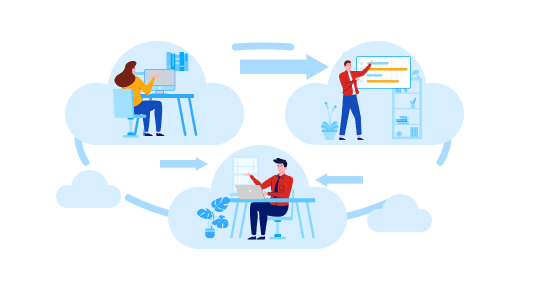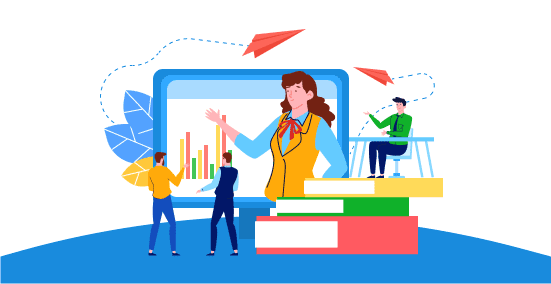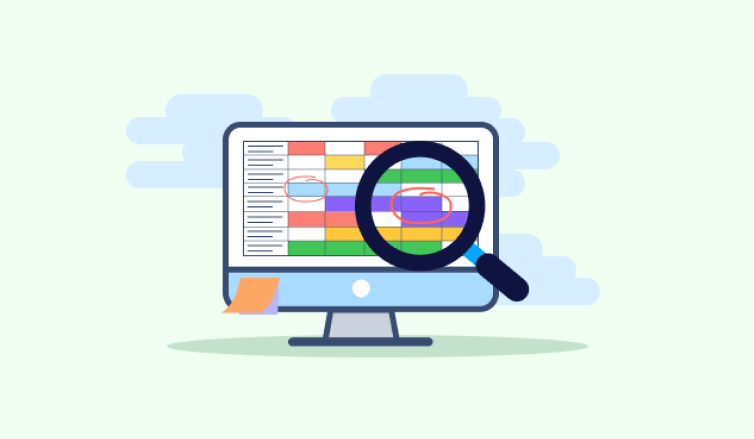Imagine the modern workplace without technology. Just for a moment, consider spending an entire day at work without any digital technology to rely on… “Unimaginable” (if not frightening) is what that would be, don’t you think?
A decade ago, it might not have been as impossible. But today, especially in the backdrop of a pandemic, technology is very deeply connected to modern livelihood – from allowing us the luxury of remote working to keeping the global economy afloat.
Technology has also been vital in helping organizations to adapt to a reality where everything can happen remotely, whether that happened by design or by default. And while this could arguably be the future of workplaces, one cannot ignore the employee engagement aspect of this arrangement. Yes, we’ve come a long way and automation has made life convenient, but some questions linger on…
- How can we be sure that employees are still engaged?
- Are they motivated enough to put their best foot forward regardless of where they are physically?
- Do they have all the infrastructure and tools needed to be just as productive?
- Are we accounting for upskilling and learning while they work remotely?
These are all very valid questions that we hope will be addressed through the course of this blog.
This is an especially trying time for any organization’s Human Resources department, as it brings a whole new set of challenges that never existed in the past. Except for a handful of companies that adopted the remote work structure and are embracing technology to support it, everyone else is in the same boat!
From employee productivity to onboarding, training, keeping the employee satisfaction levels consistent, re-trainings and support – there are so many things that could go wrong unless handled effectively. Almost makes one wish for a simple piece of technology that could help with all these issues, especially in the context of “work-from-home” arrangements?
Well, there is. And it is called a Digital Adoption Platform (DAP).
But before we get into how a DAP can be the ultimate tool for an HR professional, let’s explore some of the key areas that remote employees struggle with, typically – areas that fall under the purview of the HR – and how technology can help bridge the gap.

Embracing Technology for Higher Flexibility and Remote Working
For those of us who took to working from home because of the pandemic, it happened suddenly. And it is not easy to transition from working in an office space to working remotely from home. There may be several hindrances that affect performance, productivity, focus and even motivation.
That apart, there is another big challenge that comes with this arrangement – infrastructure. Having the right machines to get the job done, stable Internet, a dedicated workstation, etc. Working from home is not easy for employees either!
With so many variables involved, to what extent can they be held accountable for their performance? Is there anything that organizations can do that will help employees feel less overwhelmed?
Yes – here is what you can do. It is important for companies to e-meet regularly with the workforce and keep the vision and mission alive and going. Employees need to be made aware of how much their contribution means to the company’s success and that they will be given all the help they need to make sure they are positively productive.
A DAP helps you understand where users struggle and gives you a comprehensive insight into how you can help them spend less time trying to figure out how to use the software. With these insights, you can support them with relevant help with training content, on-screen guidance. This is an easy way to improve remote working performance, as you no longer have to guess what your employees are struggling with! Use the data to show them how it is done, and performance and productivity are sure to increase.
Embracing Technology for Onboarding and Training
Making sure new employees are onboarded properly and the existing ones can continue upskilling themselves regardless of where they are, is important. It pays in the long run as it helps them stay dedicated and drives them to improve themselves.
In fact, this is a great time for organizations to invest in remote onboarding and training solutions. With people forced to stay indoors, it is very possible that their will to learn and improve on themselves is on an all-time high.
Remote onboarding is as important as training as it lays the foundation for new employees. Onboarding helps them assess and adopt the culture and practices of an organization. Good, effective onboarding is the difference between a loyal, engaged employee and one that turns over in a few months.
It is, therefore, of paramount importance for HRs to invest in a robust tool that can get the job done with maximum impact, be it training or onboarding remote employees. A DAP is your best bet.

Technology for Self-Service
When employees are not working out of an office or even in organizations with offices spread across locations, having in-person support available to guide them with all their software-related challenges might not be an option.
Plus, it is not the most time-sensitive solution when the workforce has to wait for hours to get their issues or doubts resolved.
This is where empowering them with the right tech tools to guide and handhold them becomes necessary. A Walkthrough software helps newly onboarded employees learn your software faster, better and at their own convenience, which classroom training might not allow.
If an employee is stuck not knowing what to do next on software, the DAP or walkthrough software will guide them towards the next step, validating their moves to minimize errors and so on. This self-service support is crucial in helping new employees quickly learn and get started with their jobs, navigating effortlessly through any of the software they use.
ALSO: It helps existing employees adopt daily usage software better which can help improve their performance, save time as well as increase your returns from the software! After all, it does not matter how feature-loaded your software is, or how much you believe it will help your employees. What ultimately matters is how well your employees understand the software, to what extent they use and adopt it.
We might not be able to address every single challenge that remote workers may have. But for all issues relating to employee onboarding, training, and software adoption, you can count on a DAP to handle them seamlessly and effortlessly. Trusting the right technology and empowering your employees are interconnected. And in this case, a powerful DAP like Apty, can really help modern HRs engage better with employees no matter where they are working out of.




